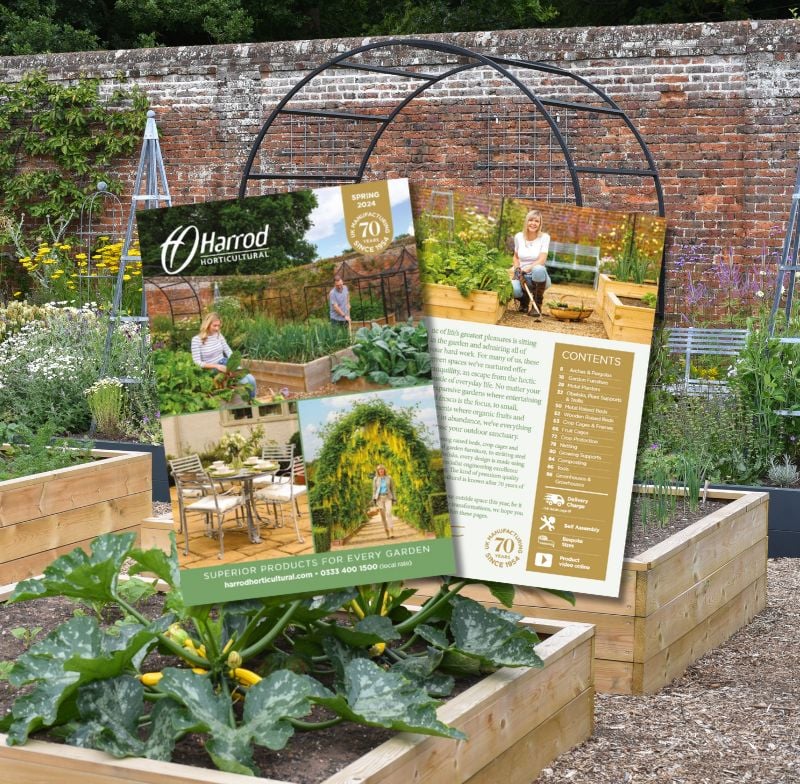Converting Produce into Tasty Preserves
Ann Somerset Miles
Setting up a store cupboard full of your own home-produced preserves is such a marvellous way to capture the full flavour of what you have grown that it far surpasses anything you can ever buy in a supermarket.
Jams, Jellies, pickles and chutneys can be made as and when fruit and vegetables come into season, in small or large batches, depending on what is ready for harvesting on any one day. Gluts can be quickly and easily transformed into delectable preserves: soon all available shelf space will be full of row upon row of tempting jars – and they make wonderful and welcome gifts.
Making preserves is not as complicated as it may at first seem. You will need only basic equipment for the traditional recipes that follow. All the essentials are listed, from the heavy-duty, stainless steel Maslin (Preserving) Pan – good quality is essential to avoid burning, to the glass jars in which to store the finished preserve.
Ensure you pick sound fruit and use undamaged vegetables in prime condition. Then set to work. The beauty of the methods I advocate is that you work in proportions of garden produce, rather than set quantities; so it doesn’t matter how much or how little fruit or vegetables are ready for picking, you can still get started.
Presentation is important, especially if you are giving your produce as a gift, so make sure you have the necessary items to seal and label your jars. The Sealing and Labelling Accessories Kit is ideal with fabric covers adds a pretty touch.
Here are three easy recipes to start with:
Spiced Plums
This is an occasional savoury treat, for our plum trees do not fruit every year; damsons (or damson-plums) are equally delicious.
You will need:
Ingredients: in the proportions given in the method that follows – plums, damsons or damson plums, granulated sugar, red wine vinegar and spices (cloves, coriander seeds, allspice, cinnamon stick and fresh ginger);
Equipment: Maslin pan, large or small preserving jars, and a jam funnel
Method: Wipe and prick the fruit with a fine knitting needle and place in a preserving pan. Then, for every 1kg of fruit, place into a small vegetable pan 520gms granulated sugar, 350ml of red wine vinegar and a salt-spoonful each of cloves, coriander seeds and allspice, a small piece of cinnamon stick and 10gms grated fresh ginger. Bring slowly to the boil, stirring until the sugar has dissolved, then simmer for 5 minutes; pour over the fruit, bring back to the boil and cook for 5 minutes. Leave covered until cool, then pack fruit into warm jars. Boil the remaining liquid until reduced and syrupy then pour over the fruit. Seal when cold.
Mrs Baker’s Pickle
Any gardener will have a mix of surplus vegetables at any one time; making pickles (crunchy) or chutney (soft) means that none need go to waste. Try ‘Mrs Baker’s Pickle’ – a recipe given me by my grandmother’s cook in the early 1970s, though its origins are much earlier. She made it in vast cauldrons, but I have reduced the quantities proportionally.
You will need:
Ingredients: in the proportions given in the method that follows – marrow, cucumber and onions, plus salt, malt vinegar, demerara sugar, sultanas and pickling spice.
Equipment: Maslin pan, funnel and jars as before, plus a muslin square to hold the spice.
Method: Take 225 gms each of marrow and cucumber (leave the skin on) and peeled onions, or an equivalent total weight (i.e 675gms). Cut all into small pieces, sprinkle with 25gms salt; cover with a cloth and leave overnight. Next day, boil 225ml malt vinegar, 125gms sultanas, 225gms demerara sugar with 25gms pickling spice in a bag. Then add the vegetables, drained, rinsed and dried; bring back to the boil, then bottle.
Strawberry Conserve
As for those with a sweet tooth, why not use late strawberries and eat delicious jam with home-made scones and cream? I have a really simple way of making Strawberry Conserve that is perfect for tea-time treats or dessert pastry tarts.
You will need:
Ingredients: in the proportions given in the method that follows – strawberries (preferably small, whole ones), granulated sugar and lemon juice.
Equipment: Maslin pan, jars and muslin square as before, plus a preserving thermometer.
Method: place small whole fruit (hulled) into a non-metallic bowl, layered with the same weight of granulated sugar; cover with a cloth and leave overnight – the sugar ‘draws’ the juice. Next day, tip the mixture into your preserving pan over a low heat; stir gently so as not to break up the fruit, just sufficient to prevent the sugar from ‘catching’. Bring to the boil, add lemon juice (half a lemon per 900gms fruit with pips tied into a muslin square) and boil until setting point is reached (around 105ºC/221°F); skim off any forming scum using a slotted spoon and remove the pips. Allow to cool in the pan, then ‘jug’ into pots. Cover with a cloth until quite cold; add a wax disc, label and lid to each jar.
Success with preserving is not difficult if you use good quality produce and suitable equipment. Whether you decide to make pickles and chutney, or jams, conserves or jellies, you will need a preserving kettle (maslin pan) and a few other basics.


























